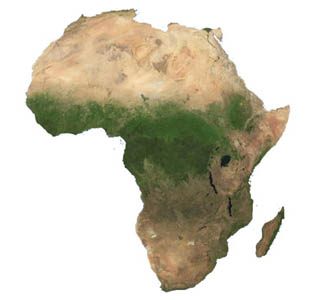Millions of Africans face hunger as aid fails to flow
Nairobi - United Nations agencies are warning of an impending food crisis in East Africa that could see millions facing starvation, but financial support is coming at a trickle as stretched governments and other donors struggle to find the resources to help.
United Nations agencies are warning of an impending food crisis in East Africa that could see millions facing starvation, but financial support is coming at a trickle as stretched governments and other donors struggle to find the resources to help.
Warnings of the need for urgent action to prevent a major humanitarian crisis have been coming thick and fast in recent days.
Drought and rising food prices are hitting Ethiopia hard, while in Somalia these factors have been compounded by fighting between transitional government troops and Islamic militias.
The UN's children agency UNICEF this week warned that six million children were facing food shortages in Ethiopia - with over 100,000 in need of urgent treatment for severe malnutrition - while the Food and Agriculture Organization (FAO) said that 2.6 million people in Somalia are in similar danger.
UNICEF says it needs 20 million dollars for emergency nutrition in Ethiopia, but it has only received one million so far.
Bjorn Ljungqvist, UNICEF's representative in Ethiopia, said that the combination of factors plus the disaster response in China and Myanmar meant donors, largely government agencies, were struggling to cope.
"I think it is a question of these major emergencies in other places, plus the fact a lot of donor support to Ethiopia has been put into long-term action," he told Deutsche Presse-Agentur dpa.
Ljungqvist said that while aid was coming in "bits and pieces" from various sources, including the European Union emergency response fund, the situation was balanced on a knife-edge.
"If you have seen the pictures of the children, you will know there isn't much margin for them," he said. "The situation is very precarious."
In conflict-ridden Somalia, drought and the ongoing refugee crisis have exacerbated the effects of the rising food prices - the FAO says cereal prices have increased by up to 375 per cent in some areas over the last year.
Worryingly, the FAO has said that if seasonal rains fail and civil insecurity continues, as many as 3.5 million people, half the Somali population, could be in humanitarian emergency conditions by the end of the year.
But the FAO is in the same boat as UNICEF. It has appealed for 18.4 million dollars in emergency aid for Somalia in 2008, but to date it has only received around 3.7 million dollars from Sweden and Italy.
The World Food Programme (WFP) is not faring much better.
"We estimate that we need 395,000 metric tonnes of food to support drought-affected people in Ethiopia alone until the end of the year," Peter Smerdon, a spokesman for the WFP in Nairobi, told dpa. "We are short 183,000 metric tonnes, valued at
147 million dollars."
However, it is not just Ethiopia and Somalia that are struggling.
The aftermath of flooding in Uganda and troubles in the Democratic Republic of Congo mean that many millions in those countries are also dependent on food aid, forcing donors to either dig deeper or spread their aid more thinly.
"The situation is pretty dire throughout the region - we have increased needs in Ethiopia, Somalia, Uganda, and the DRC," Smerdon said. "This means we have big shortfalls all coming at the same time, plus rising food prices."
The high price of food means even buying the necessary food is complicated, as many African nations do not want to sell or export their crops.
Only South Africa has a surplus, and Smerdon said that buying there could actually push prices up further, making it more difficult for the urban poor - what he called "the new face of hunger" - to afford to eat.
"We don't want to go into a market and push prices up more... we have to look at what that demand is going to do to prices in South Africa," he said. (dpa)